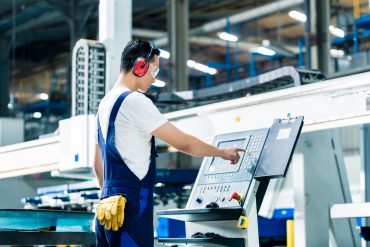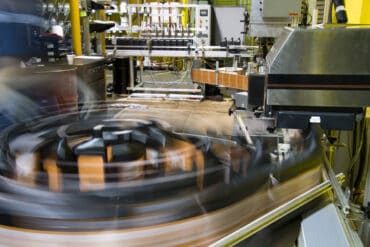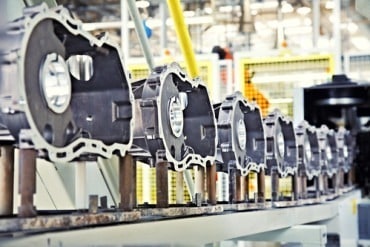
Smart manufacturing technologies like digital twins, virtual commissioning, and more can bring about the required changes to move the industry forward in the years to come.
Heading into 2024, the auto industry is experiencing a culmination of many trends that are simultaneously reaching their tipping points. Consumers increasingly want autos that are electric, autonomous, shared, connected, and updated yearly via software-enabled features. This is something industry analysts like PwC have for years called EASCY. One way that this can be achieved is through smart manufacturing.
Why the need for smart manufacturing? Certainly, not every car produced will have all five features, but a manufacturer’s production lines must be capable of incorporating them to varying degrees. As a result, automakers will have to radically change their manufacturing processes and have the flexibility to quickly adapt to support new features, technologies, and designs.
First, let’s look at each of these areas and how they impact manufacturing.
Electric vehicles: There are multiple impacts on manufacturing when electric vehicles are added to an automaker’s lineup. The cars have a fundamentally different design and require a vastly different powertrain. Many electric vehicles use lighter-weight structural elements made of new composites. And new supply chain partners are often needed to deliver critical components like Lithium-ion batteries.
Autonomous: Some self-driving features are already available in a variety of maker’s cars. But to bring truly autonomous vehicles to market requires many more sensors, video elements, and more. The data from those elements need enormous onboard processing power and sophisticated artificial intelligence software to derive insights that are used to make split-second driving decisions.
Shared: Here, it is important to properly define what shared means. For years, people have been exposed to a form of the shared vehicle concept by taking taxis and using Uber. And companies like Zipcar have made shared vehicles available by the hour. But in the context of modern automotive strategies, shared takes on a different meaning. Increasingly, shared auto services look to leverage autonomous vehicles. So, rather than hailing a passing cab, requesting an Uber ride, or searching for a shared vehicle parked nearby, a user would summon a shared car to drive to the person on demand.
Connected: The concept of connected vehicles is evolving, and manufacturers will need to keep pace with market changes. Traditionally, a connected car offered a way for a manufacturer or service company to remotely monitor the operating condition of a vehicle. More recently, some manufacturers have upped the ante and sought to leverage the connection to provide proactive services (based on predictive maintenance principles) and more.
However, many believe the next stage of connected vehicles will support vehicle-to-vehicle technology. According to the U.S. Department of Transportation’s National Highway Traffic Safety Administration (NHTSA), “Vehicle-to-vehicle (V2V) communication’s ability to wirelessly exchange information about the speed and position of surrounding vehicles shows great promise in helping to avoid crashes, ease traffic congestion, and improve the environment.”
Yearly updates via software-enabled vehicles: Many automakers are offering software-defined features-as-a-service. That has allowed new business models. In one, they build and sell one model car and then offer different versions with richer feature sets for higher sale prices. In another, the manufacturer essentially puts premium services (heated seats, rear-wheel steering, and more) behind a paywall, and customers must pay a monthly or annual subscription fee to use them. A prime example of this is the Acceleration Increase add-on Mercedes started offering in certain model cars in the recent past. The service, priced at $1,200 per year, increased the torque and maximum output of Mercedes-EQ EQE and Mercedes-EQ EQS electric car model motors by 20 to 24 percent, according to one report.
Such capabilities lend themselves to more frequent updates. In general, the rapid pace of adopting innovative technology is forcing this update model to be extended even further. For example, some believe the long-common five-to-eight-year automotive model cycles could soon be a thing of the past. Instead, many models will be updated annually to take advantage of the latest hardware and software developments in the field.
See also: Virtualizing the Automated Assembly Line
The need for smart manufacturing
To support change in every one of these areas, manufacturers must revamp their end-to-end production operations. And in every area they change, smart manufacturing can help make that change easier and more effective.
To start, they must redesign work cells, production processes, and factory workflows. They also must expand and transform their traditional supply chains, adding new partners and reinventing processes to work with new materials and parts (like lithium-ion batteries for electric cars).
They need to be flexible in many ways. Flexible to the use of new technologies as they emerge, flexible to adapt to new customer requirements, and flexible to make smaller numbers and more versions of each model in their fleets.
They must do all of this under the backdrop of tight (and potentially volatile) economic conditions. And they must keep sustainability front and center. That means not only designing and producing cars that are more fuel efficient or use electricity, but they must also lower their corporate carbon footprint and reduce waste.
Smart manufacturing can help in all of these areas. Multiple technologies like digital twins, virtual commissioning, and more can bring about the required changes to move the industry forward in the years to come.
Additional Resources

Drive production excellence with intelligent manufacturing
The automotive industry is facing unprecedented challenges, with rapid change and intense pressure to meet the demands of climate change, regulations, and consumers. Download Now

Modernize automotive factories with Siemens Smart Manufacturing solutions
Discover how automakers can transform their business with Smart Manufacturing solutions using state-of-the-art hardware and software to modernize production lines. Watch Now

Virtual Manufacturing Development for the Automotive Industry
Companies in the automotive industry are pushing to develop the next generation of autonomous, electric, connected, and shared vehicles. View Now







